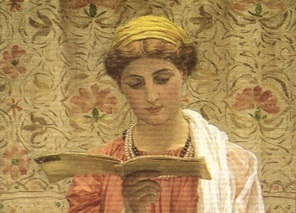Lost Vehicles
The recent removal of the word “charabanc” from the Collins dictionary (see http://blog.dictionary.com/obsolete-words/) sent me on a reverie that included the lexicological demise of so many other vehicles from the past. Oh, we will never lose “chariot” or “stagecoach” or even “buggy” for they are firmly entrenched in literature. But the more rarefied means of conveyance are now so sporadically glimpsed that, I fear, they will join “charabanc” in the word dump, where words go to linger in the shadows of history, never again to make it into the light of publication.
Have a look at them, and see if any merit any sort of rehabilitation:
charabanc, from the French «char-à-bancs» that is as elegant in its simplicity as it is mellifluous to the ear: a chariot with benches. Such was the vehicle named for its long shape, making it the ancestor of the bus, horse-drawn, and equipped with benches arranged parallel to the sides, not perpendicularly like in modern buses. The largest of the «char-à-bancs» could transport up to forty people. The name did not quite die out with the advent of the auto(self)mobile, for there was at least one model that retained the name, produced by Panhard & Levassor in 1902.
phaeton, also from the French, «phaéton», borrowed from the son of Hélios the Sun, who wanted to drive his father’s chariot one day, but lacking skill and maturity, sent the sun careening towards the Earth, almost igniting it along with its inhabitants, but killing only himself instead. The phaeton is a light four-wheeled vehicle, easily pulled by only one horse, the convertible sportscar of its time (from the end of the 18th century to the beginning of the 20th), with barely enough room for two, able to turn on an écu, and small enough to sidestep larger lumbering vehicles.
cabriolet, again from the French, from the diminutive of chèvre, meaning goat, was also a light rapid vehicle, on two wheels, often convertible, pulled by two or four horses, the roadster of its time. It proved quite unpopular among the ambulating population, however, because they were quieter than larger vehicles and were thus liable to surprise pedestrians who did not hear their approach. Several cities were able to prohibit them.
berline, named for the city in which this vehicle was first built, circa 1670, it was the most popular horse-drawn carriage of the nobles and wealthy bourgeois. It was usually pulled by four or six horses. Eight horses were by law reserved only for the royal berlines, like the one in which Louis XVI and his wife Marie Antoinette tried to escape from the revolting masses. Had they used a smaller, lighter, faster vehicle, perhaps they could have decamped to the border and kept their heads.
landau, also named for its place of fabrication, Landau in der Pfalz, in Germany, it was a luxury carriage made for the city and for the gentry: its low frame allowed the occupants to regale the lowly pedestrian with a full, magnanimous view of their loveliness dressed in their splendiferous frippery.
fiacre, (Fiaker, in Vienna) named for the Hôtel de Saint Fiacre where these carriages were first rented out to passersby. Big enough for up to eight people, they were the taxis of the time, or more like Uberpool in that they could pick up multiple people going to different destinations. Fiacres retained their popularity from 1645 until motors replaced their horses.
Many of these vehicles make an appearance in period films. Writers, take note. Pepper your historical novels with the nomenclature of carriages, buggies and hackneys. Unless, of course, your characters are all on foot. But even then, one of them may need to be run over…


0 Comments